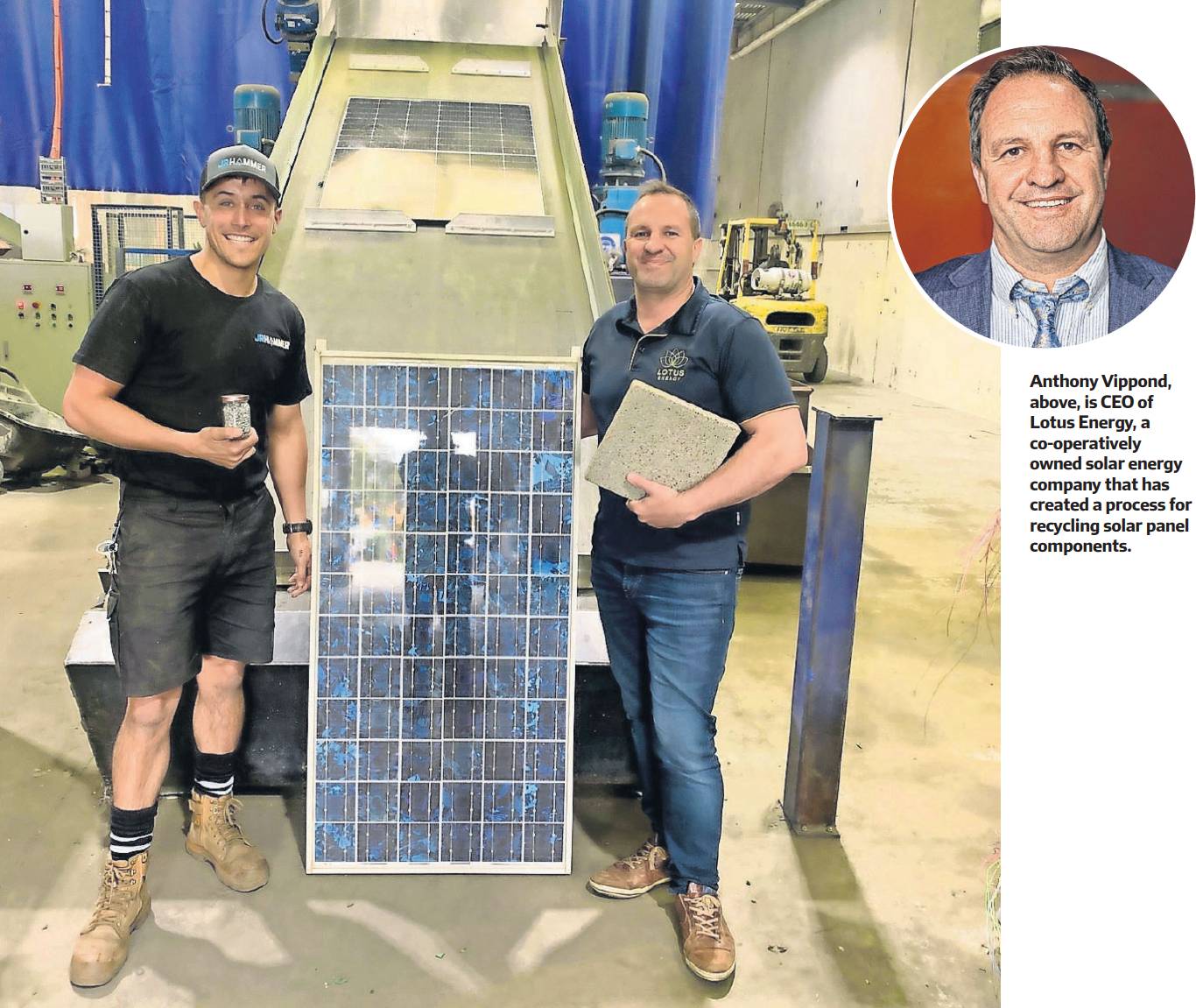PV reuse project’s a circular economy success
Australian households are embracing renewable energy with gusto, but a lack of strategic planning and the problem of recycling ageing infrastructure means the clean energy transition will be a bumpy ride for some time to come.
Among renewables, solar generation is the flag bearer, growing 31 per cent in 2021. An estimated 3.04 million houses and businesses had installed a rooftop system by the end of the year.
“Last year was another record-breaking year for rooftop solar in Australia,” notes the Australian Energy Council’s 2022 Solar Report. “Despite the global impacts of the COVID-19 pandemic, the nation’s rooftop photovoltaic (PV) market was remarkably resilient with an additional 2.8 gigawatts (GW) and 349,122 installations added to the grid during 2021.”
The impressive numbers speak to Australians’ general enthusiasm for a renewable transition. But a variety of factors are creating energy instability, culminating earlier this year in the Australian Energy Market Operator taking the unprecedented step of suspending the wholesale electricity market.
“There is no doubt that a rare combination of international and domestic events, together with long-term policy shortcomings, have led to a very nasty position from which there is no easy way out,” said Tony Wood, energy program director at the Grattan Institute, during the crisis.
He attributed the instability to four causes: failing coal-fired generators, Australia’s low gas supply, the crisis in Ukraine and spiking winter demand.
To avoid a series of rolling crises and ensure households can access affordable energy, experts argue that the transition needs to be better managed.
“Everybody would love to see clean energy and no emissions; nobody’s pro-emissions. The challenge around the transition is that our approach has probably been a little bit naive,” says Anthony Vippond, CEO of Lotus Energy.
“I’m a huge believer in renewable energy, but I also have a belief that Australians should have affordable electricity. And by creating an unneeded shortfall of energy, we just end up making renewables look bad.”
It can currently take up to three years to get a solar farm approved in Australia, Vippond says, and replacing a typical coal-fired power station that generates a few thousand megawatts requires about six times the scale of infrastructure.
“If you think it’s painful just getting an extension to your house dealing with local government, try getting a solar farm approved with a network that’s most probably owned [overseas]. There’s no urgency for the transition,” he says.
Then there is the question of what to do with ageing renewable energy infrastructure. A few years ago, Lotus Energy – a co-operatively owned solar energy company – needed to recycle obsolete solar equipment. But Vippond could only find providers who would stockpile the equipment or ship it to be burnt as e-waste overseas.
The company had hit upon a need that will only grow in coming years: figuring out what to do with obsolete solar PV infrastructure.
Because a solar panel’s average lifespan is about 21 years, it’s estimated about 100,000 tonnes of solar panels will enter Australia’s waste stream by 2035, according to figures from Sustainability Victoria.
“It’s starting to happen quite a lot,’’ Vippond says. ‘‘Households are having their systems decommissioned and installing a new system for whatever reason, and the old system gets left in storage at the house because the installers don’t know what to do with it.”
Lotus Energy decided to recycle the material themselves, investing in a new recycling system for processing solar infrastructure. Solar panels contain a variety of elements that can be repurposed. Both copper and aluminium can be extracted – but Vippond says Australia does not have furnaces available to process the elements, meaning they must be sent offshore for processing – and other panel components can be transformed into gas, oil and carbon black.
But most of a solar panel is glass, which gets broken down into a fine powder and used for products including benchtops and tiles.
Because the tiles produced through recycling meet fire rating certification standards, they can be used in the construction of new solar panels, behind the batteries.
“It’s a great circular economy story,” Vippond says. “This product was once the solar panel on the roof, and now it’s the tile behind the batteries.”
Early results are promising, with Vippond confident that soon Lotus Energy will be able to recycle every single component of solar panels. “We managed to reach quite a high recovery rate early on, and we’re now at a 97 per cent recovery. We’ve run further trials to utilise that last 3 per cent which have been successful, so we’ll be at 100 per cent by the end of Q1 or Q2 next year.”
